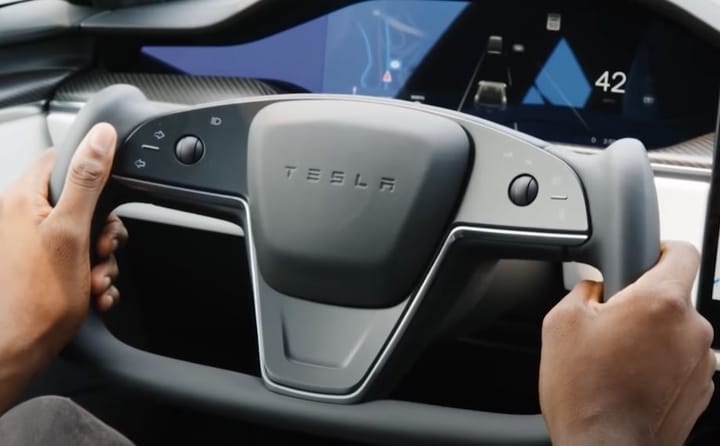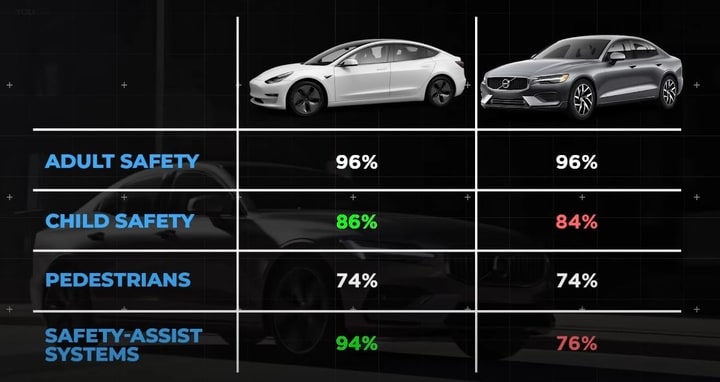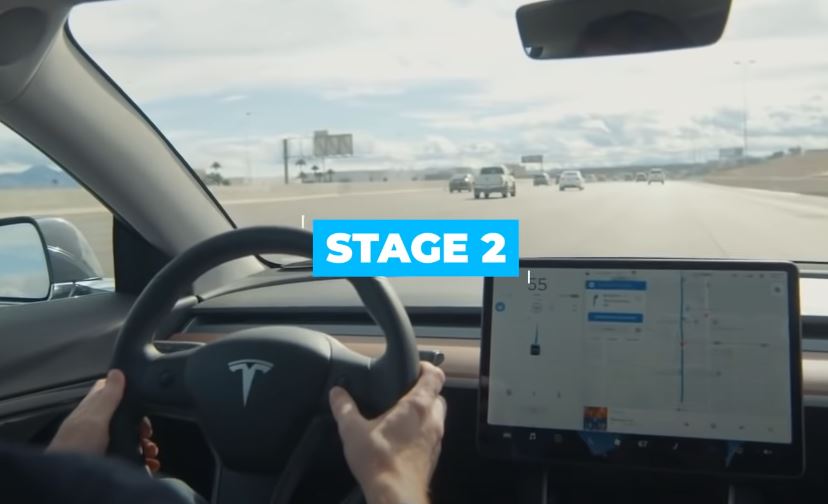The company claims that its electric cars are the “Safest cars in the world” but what evidence does Tesla, and CEO Elon Musk, have to back up that bold claim? In this article we will look at various aspects of testing, but ultimately, they all boil down to two core principles: safety, and reliability.
How Tesla Vehicles Are Tested
The company emphasises three important features that make its cars so safe. The features are a combination of:
- Active safety technology
- Passive safety technology
- Automated driver assistance systems
All of which are put through rigorous testing to ensure ultimate performance.
Put simply, active safety refers to a set of features that step in to help prevent an accident in the first place, such as:
- Electronic stability control
- Electronic brake-force distribution

Passive safety comes into play in the event of a collision, and includes things like safe seats and headrests, airbags, child seat mounting points and seatbelt pretensioners.
Automated driver assistance systems are a little harder to define, because they tread along the line that separates this category from active safety technology.
In general, these can include lane and blind spot monitoring systems, adaptive cruise control, and in the case of Tesla, evasive steering.
All three of its mainstream cars:
- The Model S
- Model X
- Model 3
Each Model achieved the lowest possible probability of injury of any car when tested by the ‘US New Car Assessment Program,’ and after crossing the pond, achieved similarly impressive five-star ratings at the notoriously harsh ‘Euro NCAP‘ testing.
These tests see multiple production cars thrown at obstacles at different angles and speeds, filled with dummies representing men, women and children as passengers.
The Model 3 crash test score
The Model 3 achieved one of the highest scores in the increasingly stringent European tests:
- 96% rating for adult occupant safety
- 86% for child occupant safety
- 74% for vulnerable road users
- and 94% for its safety assist systems
For reference, a Volvo S60, a similarly sized saloon car built by a company that prides itself on its safety, achieved the following scores. The test scores shows just how advanced Tesla’s safety technology can be; the ‘safety assist systems’ in particular.

Most electric cars are inherently rigid, benefitting from large crumple zones and a low centre of gravity, thanks to the strong battery packs that are generally located under the cabin.
Applying mathematics and physics to the design of its cars is Tesla’s first step to engineering and testing the safest cars on the market.
Stage two involves real-world testing of Tesla cars

While most manufacturers take a sample of one vehicle in every couple of thousand produced to test, we’re told that Tesla takes a lot more.
The team is headed by Jeff Hickethier, who has been working in the automotive industry for decades.
When he’s not testing the cars, he’s sitting in the passenger seat instructing the next generation of testers.
The primary facility is located adjacent to the Fremont factory in California; the track dates back to the 1980s when the factory was originally jointly owned by General Motors and Toyota. The track has been perfected over the years to provide the most accurate scenarios for the best results.
Hickethier teaches his team to focus on every little thing that the average consumer wouldn’t even notice.
This can include checking brakes and wheel alignment through feedback from the pedal and steering wheel.
The track includes lengths of harsh bumps that are designed to:
- Rattle the cars
- Highlighting loose fittings and fixtures
- Long, fast straights for high-speed
- Acceleration testing
Some cars then make their way northbound, until they reach the emptiness of Alaska.
Near Delta Junction is a dedicated testing ground, made up of perfectly manicured snowy and icy surfaces, as well as snowy handling courses, iced hills and a suitably large skidpad. Tesla shares the facility with the military, which tests its tanks in the extreme weather.
It’s not just on and off-road stability that Tesla tests

The heating, ventilation and air conditioning system is fine tuned here to help it perform more efficiently in colder climates. The battery thermal and power management is tuned as well.
The best off-roaders use locking or limited-slip differentials for maximum off-road grip, which allows each wheel to deliver the right amount of power.
Tesla, on the other hand, uses an open differential which means both the wheels on any given axle spin at the same rate.
Put simply, the front left wheel may be gripping sufficiently while the front right wheel may be spinning wildly in a failed effort to get traction.
Rather than fit its cars with the more expensive and sophisticated solution that most people would not even require 99% of the time, the company opted for a cheaper alternative that it calls an e-differential, which applies the brakes to individual wheels to prevent unnecessary spinning.
Clever, but not unique; the likes of BMW and Mercedes have been using this sort of system for years.
The final stage of testing may not be what you expect – by this point, the cars are on the roads, in the hands of the general public.
Every single Tesla that rolls off the production line since the early Model S is digitally connected, full-time.
Over one billion miles in Autopilot mode alone have been logged and recorded so far, helping to develop active technology based on real-world scenarios.
Thanks to this, unpredictable events like other drivers’ errors and unexpected fires have led to new developments.
Now, for example, fires in the battery get isolated to prevent spreading, while heat is ventilated away from the cabin.
No other manufacturer is doing anything like Tesla
Which puts the electric vehicle manufacturer (Tesla) paces ahead of competition.
Thanks to this extensive and revolutionary testing model, beating the safety scores of any Tesla Model has become almost impossible.
Whether you believe the marketing material or not, it’s clear that Tesla is dedicated to extensive testing, ensuring that it creates the safest possible product.
Do you know of any other manufacturers that go to such extremes to test their cars? Let us know in the comments below.
Related posts:
